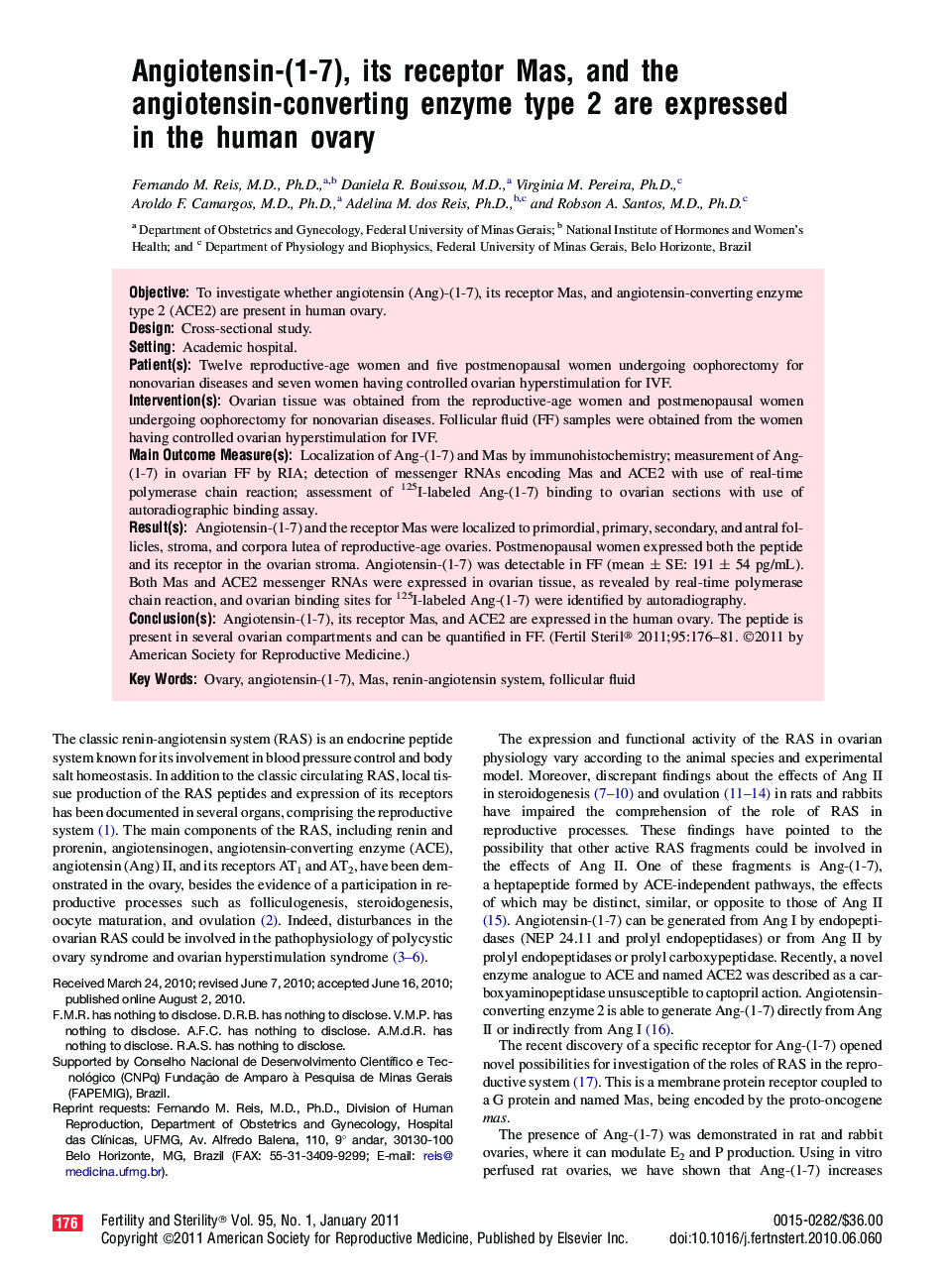| Article ID | Journal | Published Year | Pages | File Type |
|---|---|---|---|---|
| 3932625 | Fertility and Sterility | 2011 | 6 Pages |
ObjectiveTo investigate whether angiotensin (Ang)-(1-7), its receptor Mas, and angiotensin-converting enzyme type 2 (ACE2) are present in human ovary.DesignCross-sectional study.SettingAcademic hospital.Patient(s)Twelve reproductive-age women and five postmenopausal women undergoing oophorectomy for nonovarian diseases and seven women having controlled ovarian hyperstimulation for IVF.Intervention(s)Ovarian tissue was obtained from the reproductive-age women and postmenopausal women undergoing oophorectomy for nonovarian diseases. Follicular fluid (FF) samples were obtained from the women having controlled ovarian hyperstimulation for IVF.Main Outcome Measure(s)Localization of Ang-(1-7) and Mas by immunohistochemistry; measurement of Ang-(1-7) in ovarian FF by RIA; detection of messenger RNAs encoding Mas and ACE2 with use of real-time polymerase chain reaction; assessment of 125I-labeled Ang-(1-7) binding to ovarian sections with use of autoradiographic binding assay.Result(s)Angiotensin-(1-7) and the receptor Mas were localized to primordial, primary, secondary, and antral follicles, stroma, and corpora lutea of reproductive-age ovaries. Postmenopausal women expressed both the peptide and its receptor in the ovarian stroma. Angiotensin-(1-7) was detectable in FF (mean ± SE: 191 ± 54 pg/mL). Both Mas and ACE2 messenger RNAs were expressed in ovarian tissue, as revealed by real-time polymerase chain reaction, and ovarian binding sites for 125I-labeled Ang-(1-7) were identified by autoradiography.Conclusion(s)Angiotensin-(1-7), its receptor Mas, and ACE2 are expressed in the human ovary. The peptide is present in several ovarian compartments and can be quantified in FF.
